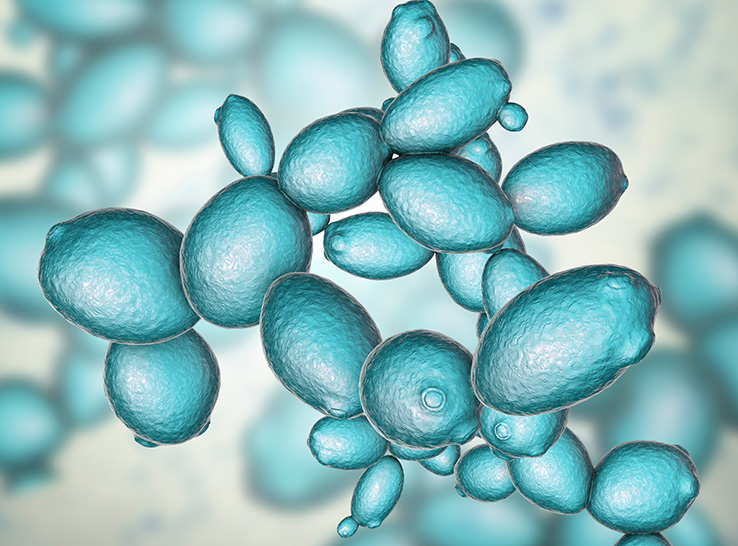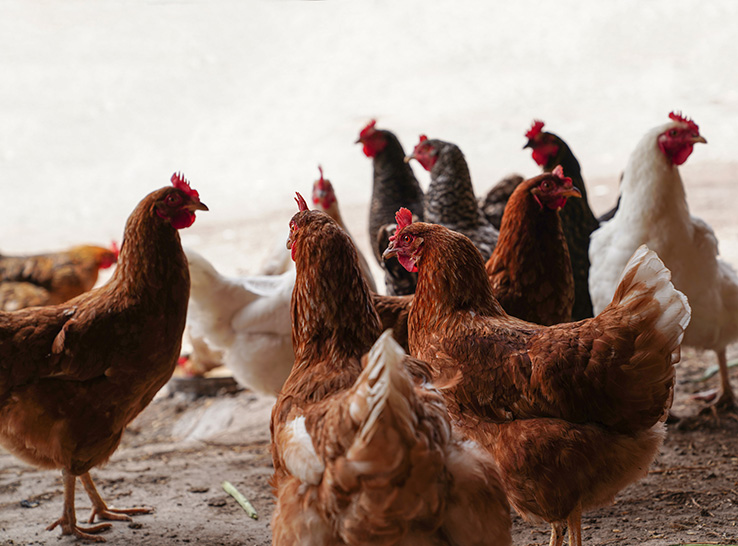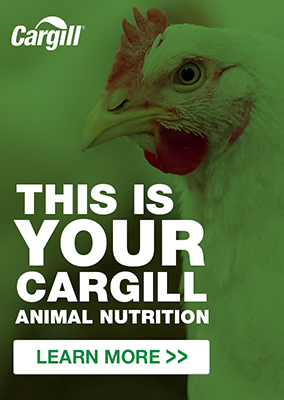In cage-free systems, it’s not only the birds that are moving around more freely. According to Eric Gingerich, DVM, technical services specialist for Diamond V, a Cargill company, bacterial transmission is also quicker and more efficient when birds roam uninhibited in large groups, underlining the importance of effective disease management.
Dust inhalation and increased exposure to litter and feces in free-range houses can promote bacteria transmission into the birds’ respiratory tract. Inhaled ammonia from wet litter can also increase flock susceptibility to bacterial infections.
Gingerich explained that water puddles outside are popular hydration sources with organic or pastured flocks, but they are also sources of undesirable bacteria. In addition, outdoor access increases exposure to wild animals and the bacterial diseases they carry.
Furthermore, feathering issues can become more problematic because of greater interaction with flock mates. Feathers provide a barrier against bacteria entering through the skin. If feathering is reduced, this protection is absent and there is more potential for bacteria to enter.
Lurking disease risks
The bacteria that thrive in cage-free environments are linked to a number of economically impacting diseases.
From an economic standpoint, Escherichia coli infection is likely to be the most damaging as it is the most widespread problem in the industry, followed by infectious coryza, fowl cholera and erysipelas, according to the annual disease survey of the Association of Veterinarians in Egg Production, Gingerich explained.
The other most significant loss-causing diseases are campylobacteriosis (spotty liver disease), focal ulcerative dermatitis, colibacillosis (caused by E. coli), mycoplasmosis (caused by both Mycoplasma gallisepticum and Mycoplasma synoviae), clostridiosis (gangrenous dermatitis and necrotic enteritis) and focal duodenal necrosis, he added.
In Gingerich’s view, increased mortality is the biggest impact of most bacterial diseases in cage-free layers. Depending on the disease involved, egg-production loss due to morbidity is also a risk.
Assuming no loss of daily percent production, the loss of eggs per hen housed due to mild, moderate or severe mortality is estimated to be four to 16, he said. Using 2023 egg values and costs, the losses per hen are from 28 cents to $1.12 per hen housed, he added.
Chronic inhalation or ingestion of bacterially contaminated air, water or litter can lead to intestinal or respiratory subclinical disease, adversely affecting feed conversion and performance.
Successful control strategies
According to Gingerich, there are multiple options to manage these diseases effectively, even as producers face pressure to reduce the use of antibiotics.
From his experience, he recommends various strategies, such as maintaining coliform-free drinking water by using continuous water-line sanitation with chlorine dioxide and verifying that the system works.
Producers should speak with their veterinarians about the best methods for thoroughly cleaning and disinfecting the house between flocks, including removing biofilms from water lines.
Other helpful measures include implementing effective biosecurity, which reduces the risk of undesirable bacteria from being introduced, and using available vaccines against historically prevalent bacterial, protozoal and viral diseases on the farm.
Certain vaccines are given as boosters during lay to avoid late lay-cycle mortality, Gingerich said, adding that a veterinarian can offer guidance on best practices.
Meanwhile, maintaining good feathering throughout lay provides feedback to the nutritionist, who can adjust rations based on this information. Gingerich recommends using bird breeds that historically retain feathering.
Mycotoxin avoidance is another aspect of disease control that a nutritionist can oversee, given that mycotoxin consumption may result in immunosuppression.
Role of feed additives
“The use of feed additives that promote beneficial bacteria, a more robust immune system and support intestinal health is another effective option,” Gingerich said.
“Feed additives like postbiotics, probiotics, prebiotics and phytogenics can help support birds’ immune systems during times of challenge.”
These feed additives can promote the growth of beneficial bacteria in the gut, Gingerich explained, thereby helping to reduce the shedding of harmful bacteria into the environment.
They also support gut integrity, which builds a barrier against invasion and strengthens the immune system’s response to harmful bacteria.
“Ultimately, it’s important to use feed additives that research shows are effective and give a good return on investment,” Gingerich said.
“Seek information from your feed-additive suppliers,” he added. “And as always, look at the data and research to guide your decisions and help you understand the potential impact an additive might have on your flocks.”
Editor’s note: Content on Modern Poultry’s Industry Insights pages is provided and/or commissioned by our sponsors, who assume full responsibility for its accuracy and compliance.








